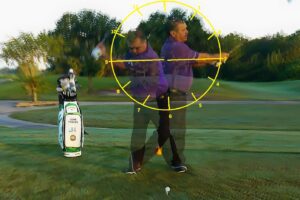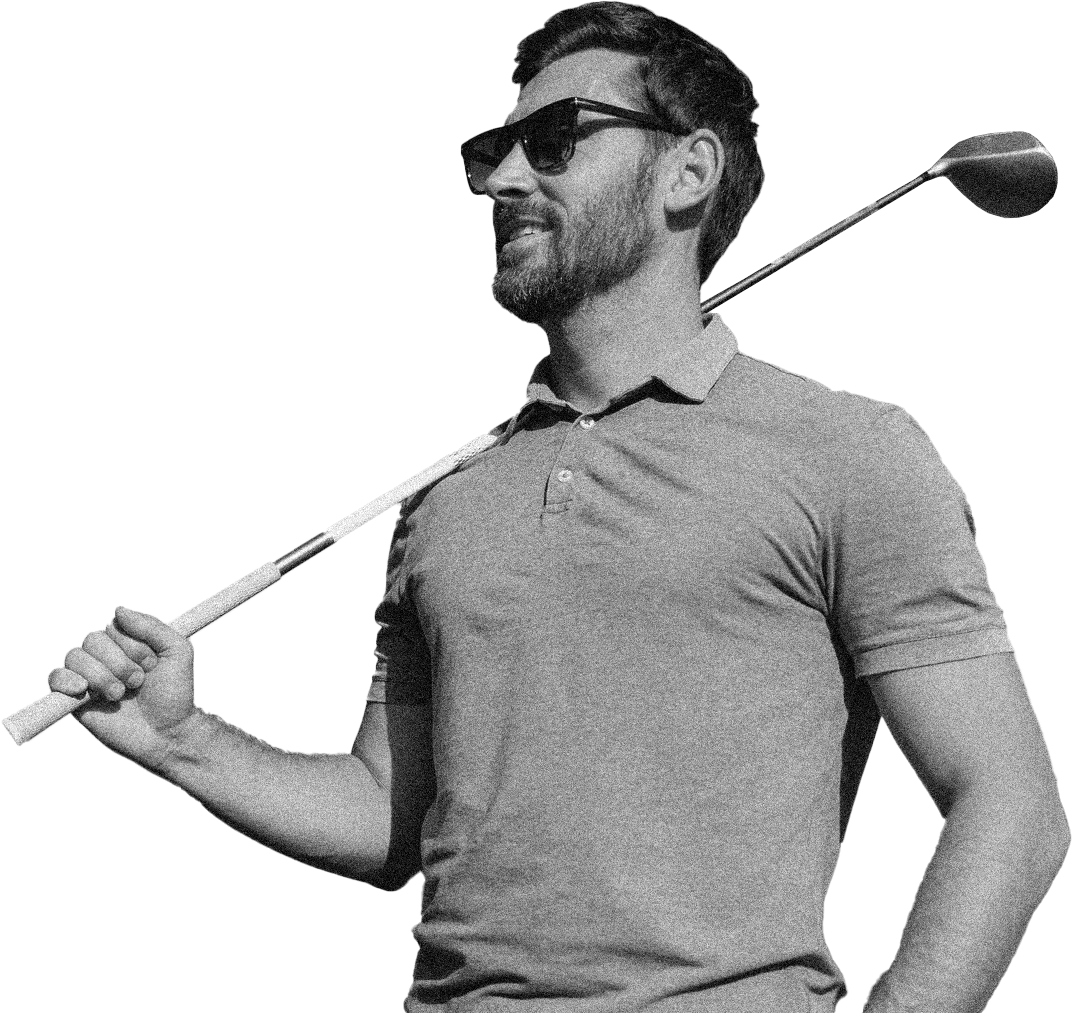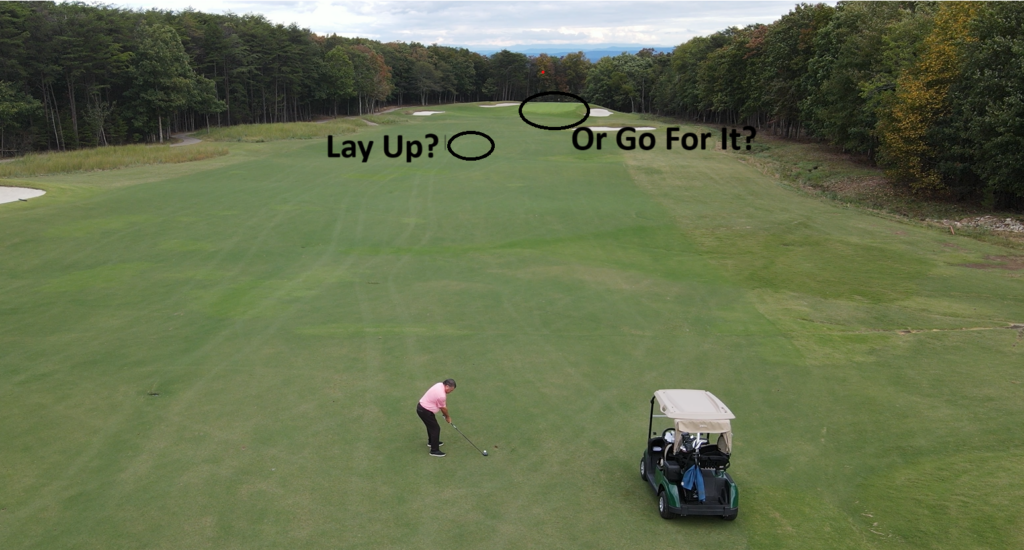One of the bigger mistakes I see take place on the golf course is golfers choosing to go for the green in 2 on par 5’s. When there’s no way they’ll make it. The next biggest mistake I see is the same golfer not knowing how to layup on a par 5. Both mistakes can be costly to your score and your ego. When golfers visit me for to attend a Florida Golf School Vacations, layup shots to par 5’s are one of the subjects we focus upon during on-course coaching.
There’s More than One Way to Play Layup Shots to Par 5’s
When it comes to par 5’s, I bet you’re always concerned about hitting your driver as far down the fairway as possible. How often does that happen? If the tee shot puts you at a yardage that is anywhere close to how far you hit your next longest club, I bet you go for the green all the time.
You may be right doing so, as Strokes Gained statistics points out. But what if you can’t reach the green and your short game is not as good as it could be to make your bomb and gauge play worth the risk?
The temptation to go for the green in 2 can be exhilarating. Risk reward is written all over this shot. However, understanding when to layup and choosing the right yardages to do so can significantly improve your score. But there’s science and artistry to this shot, along with 2 yardages you have to be comfortable with before you can navigate par 5’s with confidence.
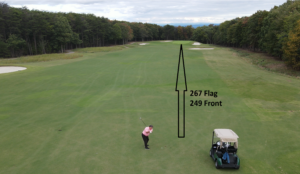
Some Numbers to Chew On
Most amateur golfers assume PGA Tour Players at worst birdie par 5’s. If not eagle those holes. Why? Because you only see the tour players on fire that day or tournament during tv coverage. And that’s why you believe they make low scores on those holes.
The truth of the matter is the average score on tour for par 5’s is 4.60 strokes. Not as low as you think. It’s the tour players’ short games that allow them to go for it in 2 almost all the time and provide the opportunity for par or better. By the way, tour players kick themselves when the make a bogie on a par 5. And so should you.
Based upon your current skill level, I bet your average score on par 5’s is above par. Not acceptable! Why? Because your mentality is you’ll make up for the double bogie or worse that you just put on your scorecard. How can a birdie make up for a double bogie or worse?
Par 5’s are not holes you’re attempting to make up ground. These are holes that if strategized well insure you make no worse than par so you can move on to the next hole.
The Importance of Playing Strategic Layup Shots to Par 5’s
Par 5’s are often the most forgiving holes on the course, offering ample scoring opportunities. However, the key to making the most of these chances lies in your strategy. Laying up is not a sign of weakness; it’s a tactical decision that can set you up for lower scores. The goal is to find the right balance between risk and reward, keeping in mind your strengths and comfort levels.
Two Key Yardages to Consider
When it’s time for the better part of valor to layup to a Par 5, there are more items to consider than maybe you’ve thought about in the past. The most important items to consider are the 2 key yardages that you need to know to your decision to go for it or layup a good one.
Approach Yardage to the Green
This is the distance you’ll want to cover with your 3rd shot to the green. A yardage needed to check the box for a Green Hit In Regulation. It’s important to understand with your approach yardage to the green, what your carry distance is for all clubs as well as the one club you hit the most accurate. Why does approach shot yardage to the green matter?
-
- Accuracy Over Distance – Aiming for the exact distance to the green helps you make an informed decision about your club choice and swing. Playing to this yardage ensures that you’ll be able to attack the flag with a controlled shot, rather than going for broke and risking a big number if you miss.
- Understanding Pin Position – Knowing this distance helps you plan your shot based on the pin’s location. For example, if the pin is in the back, you might aim for the middle of the green or a bit short to avoid long putts or tricky up-and-downs.
How do You Determine the Approach Yardage to the Green?
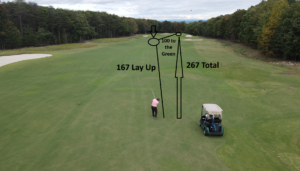
- Use a rangefinder or GPS device to measure the distance from your current position to the center of the green.
- Consider the wind conditions and elevation changes, as these can affect your approach shot. For example, a strong headwind might require a club up or a longer swing.
Layup Yardage
If you’re not confident in reaching the green in two shots or if there are hazards ahead, you might choose to lay up to a specific distance that sets you up for an easier third shot. When determining your Layup Yardage, keep in mind the club you hit the most accurate and have the best control of carry distance with. Why does layup yardage matter?
-
- Avoiding Hazards: Layup yardages help you avoid bunkers, water hazards, or other obstacles that could make your third shot more difficult.
- Optimizing Your Next Shot: By laying up to a preferred distance, you ensure that your next shot is with a comfortable club and distance. For many golfers, this means hitting a more manageable iron shot rather than trying to squeeze a fairway wood onto the green.
How Do You Determine Lay Up Yardage?
- Identify a spot on the fairway where you’d like to land your second shot. Keeping in mind the club you hit the most accurate and have the best control of carry distance with.
- This should be a distance that leaves you with a manageable approach shot to the green, considering the pin placement and green contours.
- Check the layout of the hole and any potential hazards. For instance, if there’s a bunker 100 yards from the green, aiming to land your second shot 120-130 yards out might be ideal.
An Example of Determining Your Layup and Approach Yardages
Let’s take a hypothetical par 5 that measures 550 yards.
You hit a drive about 250 yards leaving you with almost 300 to the green. Again, keeping in mind the distance you want to hit your approach from will determine the layup distance you’ll want to consider, barring any hazards or obstacles you need avoid.
Your favorite club is your 9 iron and it carries on average 137 yards. Subtract 137 from 300 and that leaves you a Layup Yardage of 163.
The numbers are speaking load and clear to you now. Either hit the 3 wood very short into “No Person Land”. Or layup hitting your 6 or 7 iron 160 to 170 yards down the fairway to leave yourself the desired approach yardage of 137.
Layup Shots to Par 5’s is more than Just a Number
To hit good layup shots, you’re going to need more than the 2 yardages mentioned above. You need to:
Aim to an Exact Target
All too often at John Hughes Golf I’ll see new clients hit layup shots to no target at all. Stating that the middle of the fairway is their target. You might as well be hitting your shot into a wide cow pasture if you take that attitude. Like any other shot in golf, layup shots require exact targets, not just a general vicinity. Find any object down range, down the fairway, that sticks out to you and your eye. Something that is easy to focus upon and represents the directional target of the “middle of the fairway” you are attempting to reach.
I think you’ll find by using an exact target, your layup shots become that much more accurate, both directionally and with distance.
Visualize Your Shot
After finding an exact target, can you imagine in your mind’s eye what the shot will look like? How high will it fly? How much curvature will it have? And in which direction will it curve? Being able to envision any shot is the skill all great golfers possess. With layup shots, the more you envision the better.
Be Committed
When you’ve made all the yardage decisions and you’re ready to execute the shot, leave all doubt behind you. The biggest doubt you’ll have over the ball is your decision to lay up. You can’t be second guessing yourself as to whether to lay up or go for it as you address the golf ball.
Adapt/Adjust/Create
Having a standardized way of strategizing a par 5 is great. But all par 5’s are not built alike. Your ability to understand each par 5 and adapt your strategy to each hole’s nuances is critical to your success on those holes. Being able to adjust for more or less length of layup and approach shots is inevitable. With more distance between tee and green comes more decision making. Decisions about what club you want to hit into the green. And with every bend around a dogleg comes a decision to create a layup shot that will allow you an opportunity of par or better.
Conclusion
Choosing the right yardages to layup on a par 5 is a crucial skill. And it can can lead to lower scores and a more enjoyable round. It’s a skill we coach consistently at John Hughes Golf. By understanding your own strengths and analyzing the hole’s layout, you can make smart decisions that position you for success. Golf is a game of strategy as much as it is about power. When playing par 5’s in the future, embrace layup shots to par 5’s. You’ll find yourself with more birdie opportunities and fewer high numbers on the scorecard.




